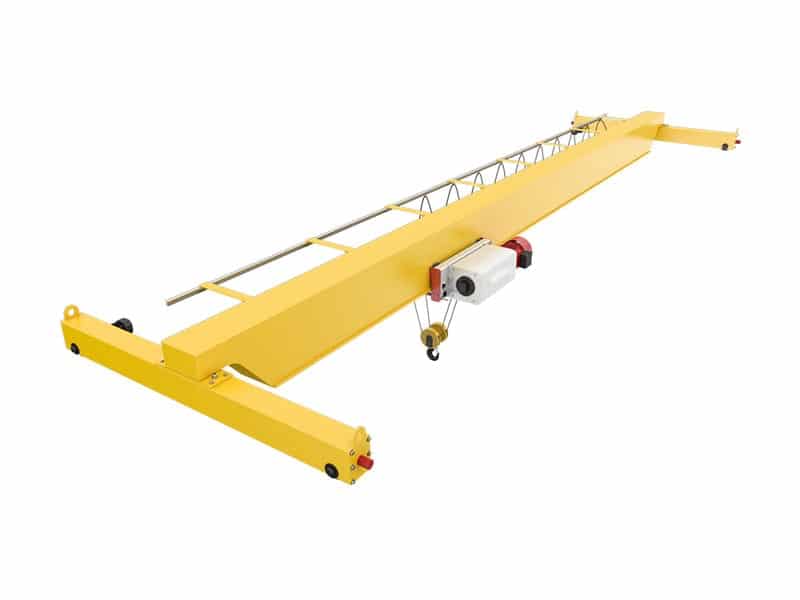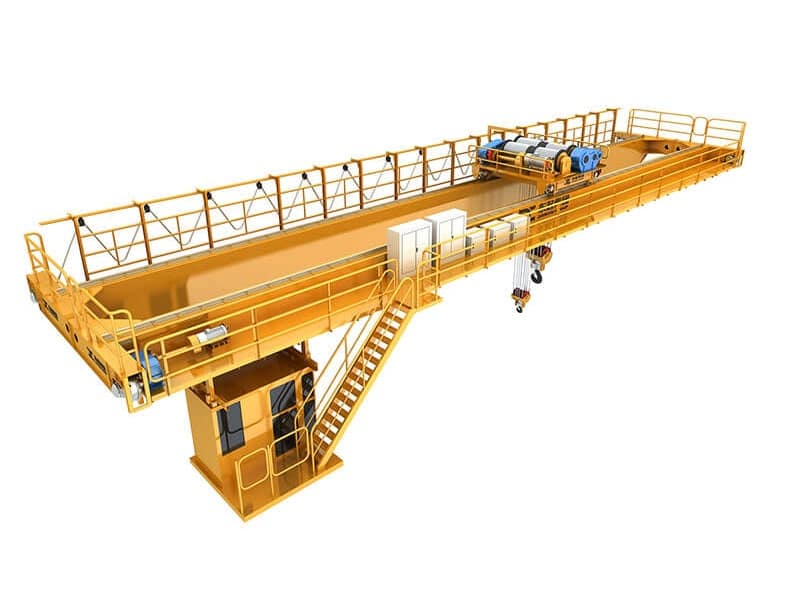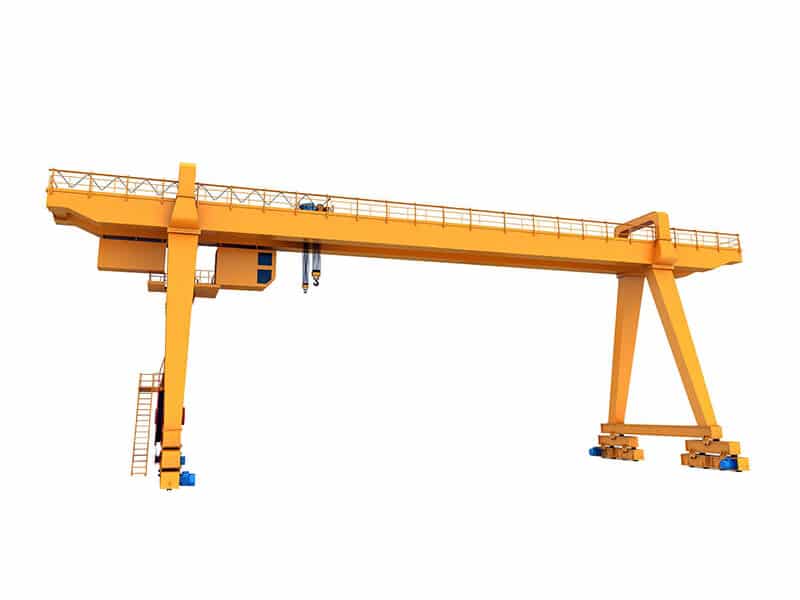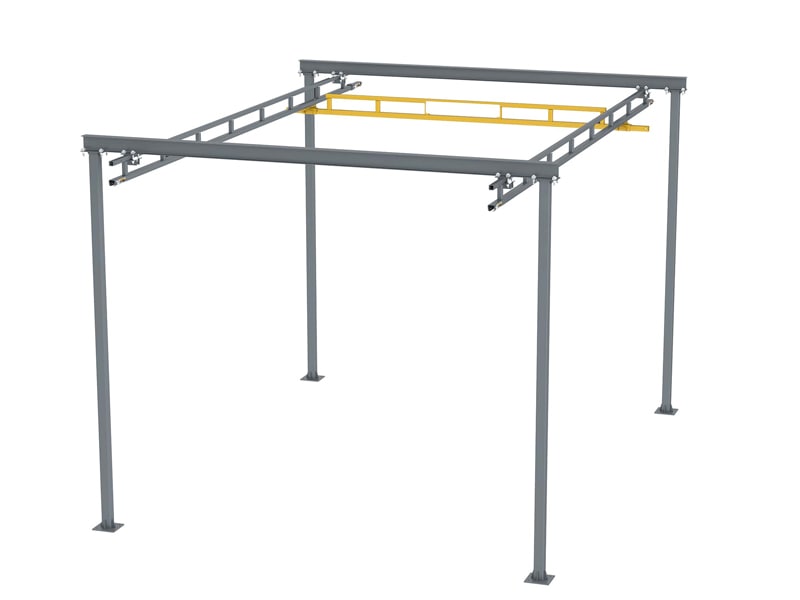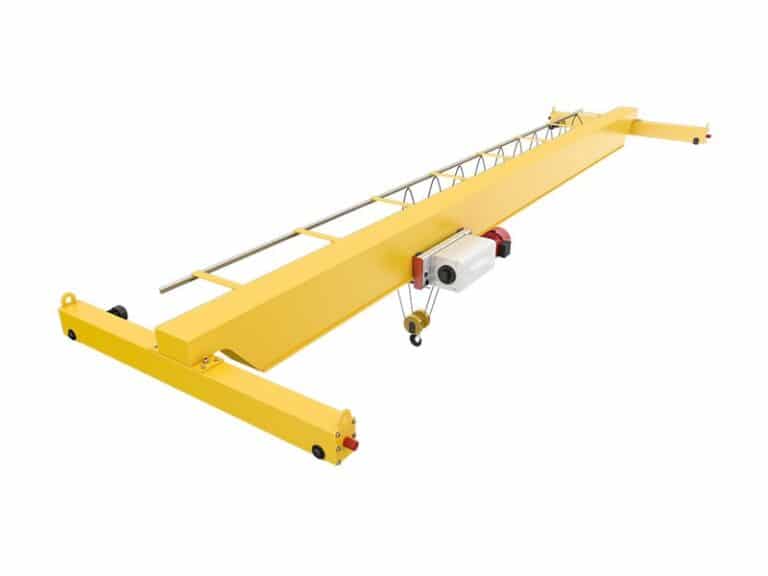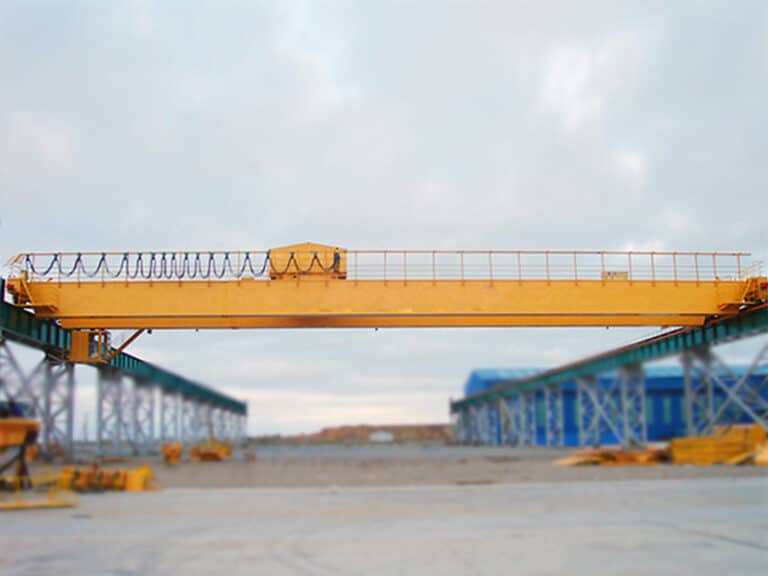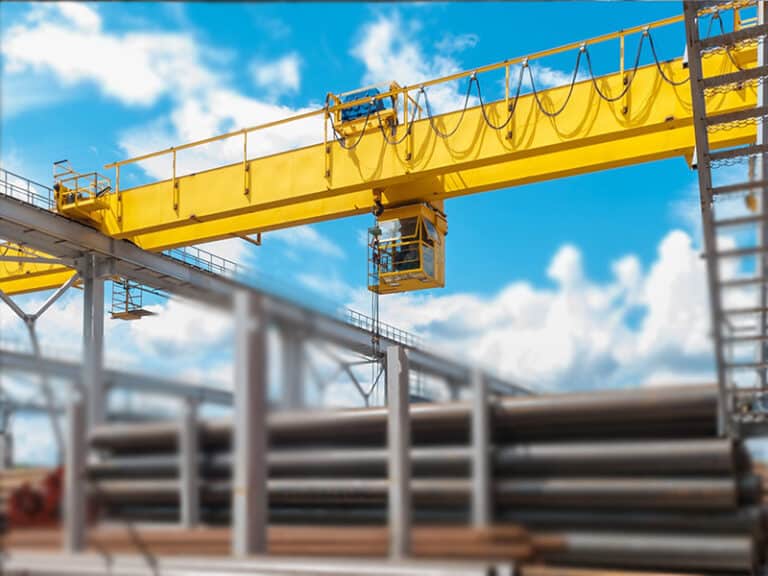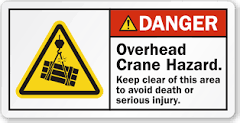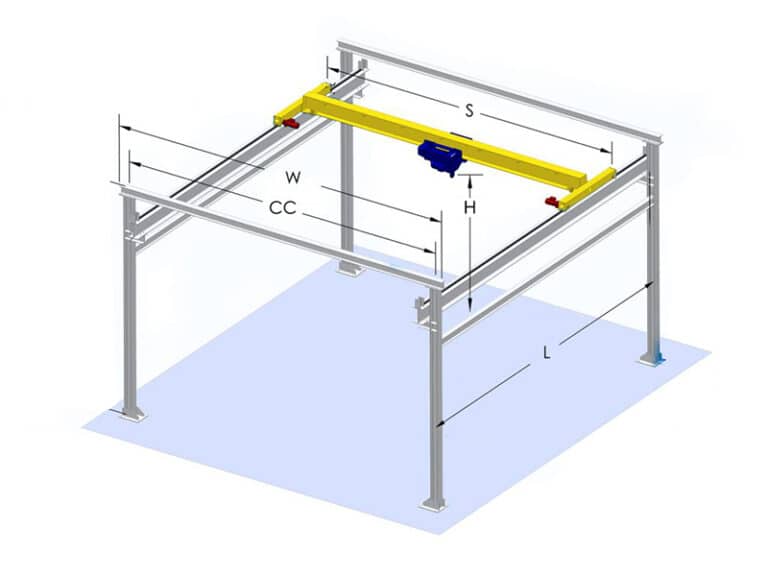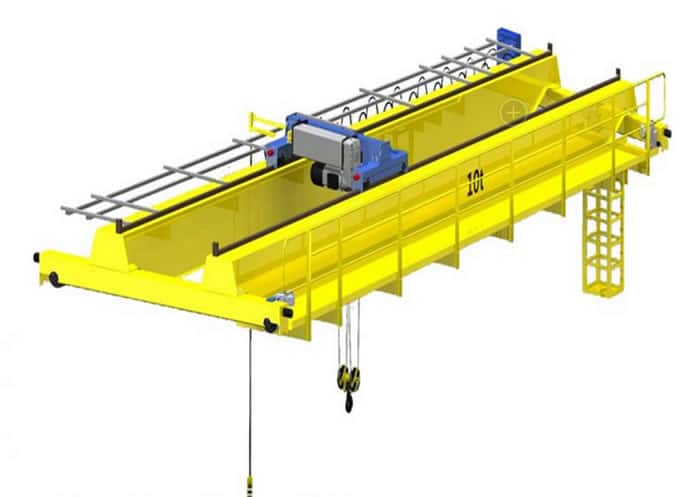EOT cranes are essential equipment in various industrial settings, such as manufacturing, construction, and shipping. They are designed to lift and transport heavy loads with precision and efficiency, making them critical for improving productivity and safety in the workplace.
In this article, we will explore the key factors that go into designing an EOT crane, the different types of EOT cranes available, as well as the structural, electrical, and mechanical components that make up these cranes.
Introduction
EOT (Electric Overhead Traveling) cranes are a type of material handling equipment that are commonly used in industrial environments. They are designed to lift and transport heavy loads horizontally within a workspace.
EOT cranes have revolutionized the way materials are moved in manufacturing, construction, and shipping industries. Their ability to move large and heavy loads with precision and efficiency has significantly improved productivity and safety in the workplace.
The history of EOT crane design dates back to the early 19th century when cranes were first used in industrial settings. The first cranes were manually operated, but as technology progressed, electric motors were introduced to power these cranes. Today, EOT cranes come in various types and designs, ranging from single girder to double girder, gantry, and underslung EOT cranes.
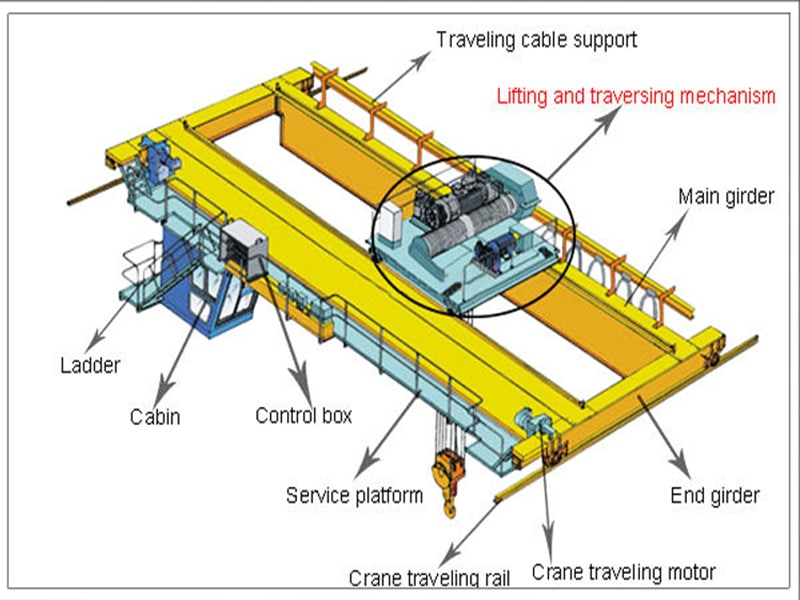
Factors to Consider When Designing
When designing an EOT crane, several factors need to be taken into consideration to ensure optimal performance and safety. Here are the key factors to consider:
Load Capacity:
The load capacity of an EOT crane is one of the most critical factors to consider during the design process. It determines the maximum weight that the crane can lift and transport safely. The crane’s load capacity should be carefully calculated based on the heaviest load that the crane will handle in the operational environment.
Span and Height of the Crane:
The span and height of the crane refer to the distance between the crane’s supporting structures and the maximum height at which the crane can lift loads. These dimensions are critical to ensure that the crane can reach and move loads effectively in the operational environment. The span and height of the crane should be determined based on the size of the workspace and the maximum height of the loads to be lifted.
Operational Environment:
The operational environment is another critical factor to consider when designing an EOT crane. The environment in which the crane will operate will determine the type of crane needed, as well as the materials used in its construction. Factors such as temperature, humidity, dust, and corrosive elements must be taken into consideration to ensure the crane’s longevity and performance.
Duty Classification:
The duty classification of an EOT crane refers to how often and for how long the crane will be in use. This factor determines the design specifications for the crane and the materials used in its construction. The duty classification is based on the number of operating cycles per hour, the duration of the operating cycles, and the weight of the loads being lifted.
Crane Motion and Control:
The motion and control system of an EOT crane is crucial to its overall performance and safety. The motion system refers to how the crane moves and the speed at which it moves, while the control system governs the crane’s overall operation. Factors such as the type of hoist mechanism, motor power, and braking system must be taken into consideration during the design process to ensure optimal performance and safety.
In summary, designing an EOT crane requires a thorough understanding of the operational environment, load capacity, span and height of the crane, duty classification, and motion and control system. These factors must be carefully considered to ensure that the crane can perform efficiently and safely in the intended workspace.
Types of EOT Crane Designs
EOT cranes come in various types and designs, each with its unique features and capabilities. Here are the four most common types of EOT crane designs:
Single Girder EOT Crane:
Single girder EOT cranes are the most commonly used type of EOT crane. They are designed with a single beam that supports the hoist and trolley. These cranes are ideal for light to medium loads and are suitable for use in workshops, warehouses, and production lines. Single girder EOT cranes are more affordable and easier to install compared to other types of cranes.
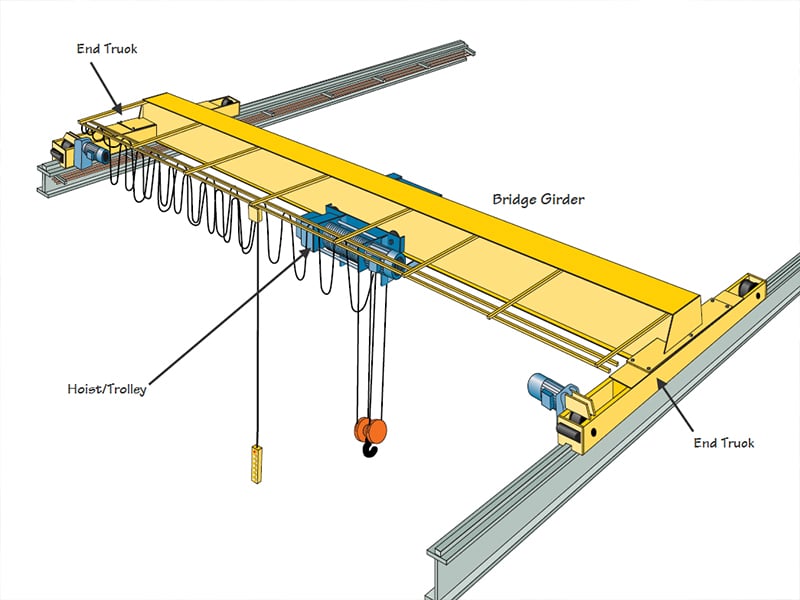
Double Girder EOT Crane:
Double girder EOT cranes are designed with two beams that support the hoist and trolley. These cranes are suitable for heavy-duty applications and can handle larger loads compared to single girder EOT cranes. Double girder EOT cranes are commonly used in steel mills, power plants, and shipyards.

Underslung EOT Crane:
Underslung EOT cranes are designed to be mounted below the runway beam, which allows for maximum use of the available headroom. These cranes are ideal for low headroom applications and are commonly used in areas where space is limited, such as workshops and warehouses.
Gantry EOT Crane:
Gantry EOT cranes are designed with legs that support the crane and allow it to move along a runway beam. These cranes are suitable for outdoor applications, such as shipping ports and construction sites. Gantry EOT cranes are highly versatile and can handle a wide range of loads.
In conclusion, EOT cranes come in various types and designs, each with its unique features and capabilities. When selecting the type of EOT crane to use, factors such as load capacity, span, and height, and the operational environment should be taken into consideration to ensure optimal performance and safety.
Single Girder Overhead Cranes
√ Standard span: 6 to 30 m
Light-duty material handling systems is mainly used in light-duty workshops and warehouses such as in the textile industry and the food industry.
Double Girder Overhead Cranes
√ Standard span: 6 to 30 m
Mainly used in factories, warehouses, and other indoor steel structure workshops.
Gantry Cranes
It is mainly used for cargo loading, unloading, and installation in open storage yards, docks, power plants, ports, and railway stations.
Under Running Cranes
Structural Design of EOT Cranes
The structural design of an EOT crane is crucial to its performance and safety. Here are the key factors to consider when designing the structure of an EOT crane:
Materials used for the crane structure:
The materials used for the crane structure are essential to its strength and durability. Common materials used in EOT crane construction include structural steel, cast iron, and aluminum. The choice of material will depend on the load capacity and environmental conditions of the crane’s intended workspace.
Design considerations for the crane girder and hoist trolley:
The crane girder and hoist trolley are the primary load-bearing components of an EOT crane. The design of these components must be robust enough to support the weight of the loads being lifted. The shape and size of the girder and trolley will depend on the type of crane and its load capacity. Factors such as deflection, bending, and fatigue must be considered during the design process to ensure the crane’s longevity.
Safety features such as limit switches and overload protection:
EOT cranes must have adequate safety features to prevent accidents and protect both the operator and the load being lifted. Common safety features include limit switches that prevent the crane from traveling beyond the designated area, overload protection systems that prevent the crane from lifting loads beyond its capacity, and emergency stop buttons that shut down the crane’s operations in case of an emergency.
In summary, the structural design of an EOT crane is critical to its performance and safety. Factors such as the materials used for the crane structure, design considerations for the crane girder and hoist trolley, and safety features must be taken into consideration during the design process to ensure that the crane can perform efficiently and safely in the intended workspace.
Electrical and Mechanical Design of EOT Cranes
The electrical and mechanical components of an EOT crane are vital to its performance and safety. Here are the key factors to consider when designing the electrical and mechanical systems of an EOT crane:
Electrical components and wiring:
EOT cranes are powered by electrical systems that include components such as motors, switches, and wiring. The wiring and electrical components must be designed to meet the load and duty requirements of the crane. Proper insulation and grounding are essential to prevent electrical hazards.
Motor selection and control:
The motor selection for an EOT crane is critical to its performance. The motor must have enough power to lift the load and move the crane along the runway beam. The motor control system should be designed to provide smooth and precise movement of the crane. The selection of a motor and control system should take into consideration the load capacity, speed requirements, and duty classification of the crane.
Braking systems:
The braking system is essential to the safety of an EOT crane. The system should be designed to stop the crane quickly and smoothly in case of an emergency. Common types of braking systems used in EOT cranes include mechanical brakes, hydraulic brakes, and electrical brakes.
Lubrication systems:
The lubrication system is critical to the longevity of an EOT crane. The system should be designed to provide adequate lubrication to the moving components of the crane, such as the bearings and gears. Proper lubrication helps to reduce friction and wear on the crane’s components, which improves its performance and extends its lifespan.
In conclusion, the electrical and mechanical design of an EOT crane is critical to its performance and safety. Factors such as the selection of electrical components and wiring, motor selection and control, braking systems, and lubrication systems must be taken into consideration during the design process to ensure that the crane can perform efficiently and safely in the intended workspace.
Maintenance and Inspection of EOT Cranes
Regular maintenance and inspection are crucial to the safe and efficient operation of an EOT crane. Here are some key factors to consider when designing a maintenance and inspection plan for an EOT crane:
Importance of regular maintenance and inspection:
Regular maintenance and inspection help to prevent breakdowns and extend the lifespan of an EOT crane. It also ensures that the crane operates safely and efficiently. A regular maintenance and inspection schedule should be established and followed to avoid unexpected downtime and costly repairs.
Common issues to watch for and how to address them:
Common issues that may arise with an EOT crane include worn-out components, misaligned parts, and electrical problems. These issues can be detected through regular inspections, and timely repairs can be carried out to prevent further damage. Regular lubrication of moving parts and cleaning of electrical components can also prevent issues from occurring.
Best practices for maintaining the longevity of the crane:
To ensure the longevity of an EOT crane, it is essential to follow best practices such as:
Regular inspection of critical components such as hoist, brakes, and runway beams
Regular lubrication of moving parts
Proper cleaning and maintenance of electrical components
Timely repair of worn-out components
Implementation of safety measures such as limit switches and overload protection
Training of operators and maintenance staff on proper crane usage and maintenance
In conclusion, regular maintenance and inspection of an EOT crane are critical to ensure its safe and efficient operation. Common issues should be addressed promptly, and best practices should be followed to maintain the longevity of the crane. A well-maintained crane not only saves money on repairs and downtime but also provides a safe and efficient solution for material handling in industrial settings.
Conclusion
In conclusion, designing an EOT crane requires careful consideration of several factors, including load capacity, span, the operational environment, duty classification, and crane motion and control. Choosing the appropriate type of EOT crane design, such as single girder, double girder, underslung, or gantry, depends on specific requirements and limitations.
Structural design considerations include the materials used for the crane structure, design considerations for the crane girder and hoist trolley, and safety features such as limit switches and overload protection. Electrical and mechanical design considerations include electrical components and wiring, motor selection and control, braking systems, and lubrication systems.
Regular maintenance and inspection of EOT cranes are essential to ensure their safe and efficient operation. Common issues should be addressed promptly, and best practices such as regular inspection of critical components, proper lubrication and cleaning, and implementation of safety measures should be followed to maintain the longevity of the crane.
EOT cranes play a crucial role in industrial settings, and their proper design and maintenance can have a significant impact on operations. A well-designed and well-maintained crane not only saves money on repairs and downtime but also provides a safe and efficient solution for material handling.

